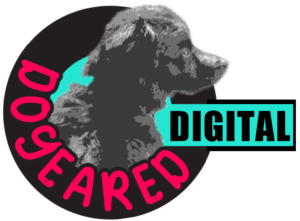As marketers, we’re constantly pressured to do more with less. Our strategies need to be effective, our content needs to convert, and our marketing funnels must be optimized. It’s a tall order in an age of information overload where audiences have seen it all before.
This is where McKinsey’s 7S Framework comes in handy. Developed in the late 70s, the 7S model is a strategic planning tool that helps organizations evaluate how well their seven key elements — strategy, structure, systems, shared values, skills, staff, and style — are aligned.
For content marketers, applying the 7S framework to your content strategy can help ensure every piece of content you produce is crafted with intention and impact. Here’s how it works:
1. Strategy: Define Your Content Goals and Objectives
Every successful content marketing strategy begins with a well-defined content marketing strategy. Start by setting clear and specific goals for your content marketing efforts. Are you aiming to increase brand awareness, drive website traffic, generate leads, or engage with your existing audience? Once you’ve identified your objectives, align them with your overall marketing and business goals to ensure consistency and effectiveness.
Example: If your company’s overall goal is to establish thought leadership in your industry, your content marketing strategy could focus on creating insightful and informative long-form articles and white papers.
2. Structure: Organize Your Content Marketing Team and Resources
An effective content marketing strategy requires the right team and resources in place. Organize your content marketing team, ensuring that roles and responsibilities are clearly defined. Whether you have a dedicated team, collaborate with multiple departments, or engage an agency or contractors, fostering open communication and collaboration is crucial for seamless content creation and distribution.
Example: You could have a team consisting of content writers, graphic designers, SEO specialists, and social media managers working together to create and promote your content.
3. Systems: Leverage Technology for Content Management
In today’s digital age, technology plays a vital role in content marketing. Utilize content management systems (CMS) and marketing automation tools to streamline your content creation, publishing, and distribution processes. Implement analytics tools to track the performance of your content and gain valuable insights to improve your strategy continuously.
Example: Adopt a user-friendly CMS that allows your team to create, edit, and publish content efficiently, while also enabling you to schedule social media posts in advance for optimal reach.
4. Shared Values: Define Your Brand Voice and Messaging
To create a consistent and recognizable brand identity, it’s essential to define your brand’s values, voice, and messaging. This shared understanding will guide your content creation, ensuring that all pieces align with your brand’s personality and resonate with your target audience.
Example: If your brand’s values revolve around sustainability and environmental consciousness, your content should reflect these principles by promoting eco-friendly practices and products.
5. Skills: Cultivate Expertise in Your Content Creation Team
Your content marketing strategy is only as strong as the skills of your content creation team. Invest in training and development to enhance their expertise in content writing, design, SEO, and other relevant areas. Cultivate a learning culture that encourages continuous improvement and innovation.
Example: Conduct regular workshops and webinars to keep your team updated on the latest content marketing trends and techniques. Invest in continuing education such as LinkedIn Learning and conferences.
6. Style: Tailor Your Content to Suit Your Audience
Each piece of content you create should be tailored to suit the preferences and needs of your target audience. Understand their pain points, preferences, and behaviors to create content that resonates and engages effectively. Use a mix of content formats such as blog posts, videos, infographics, and podcasts to cater to diverse audience preferences.
Example: If your audience consists of busy professionals, consider creating short and informative video clips that deliver key messages concisely.
7. Staff: Foster a Creative and Collaborative Content Culture
Your content marketing strategy thrives on the creativity and passion of your content team. Encourage a creative and collaborative work environment where team members can freely share ideas, brainstorm, and experiment with new content approaches.
Example: Conduct regular team meetings and brainstorming sessions to generate fresh content ideas, and celebrate successes together to foster a sense of achievement and camaraderie.
Following McKinsey’s 7S Framework helps put shape and substance behind your content strategy. It provides a blueprint for how to craft a holistic, integrated strategy that activates at every level of your organization. The result is a unified content experience for your audience and the outcomes you want to achieve. So put on your strategist hat, and get ready to build a content strategy that actually works.

